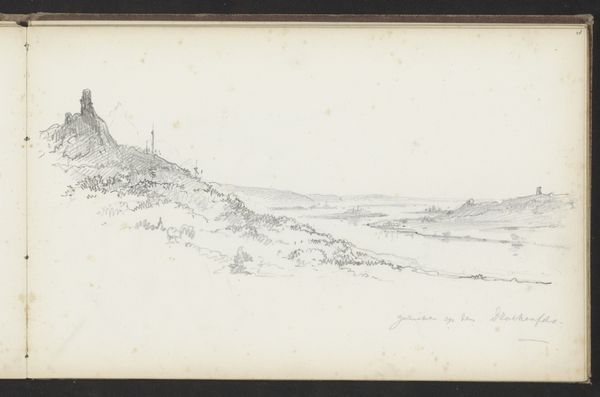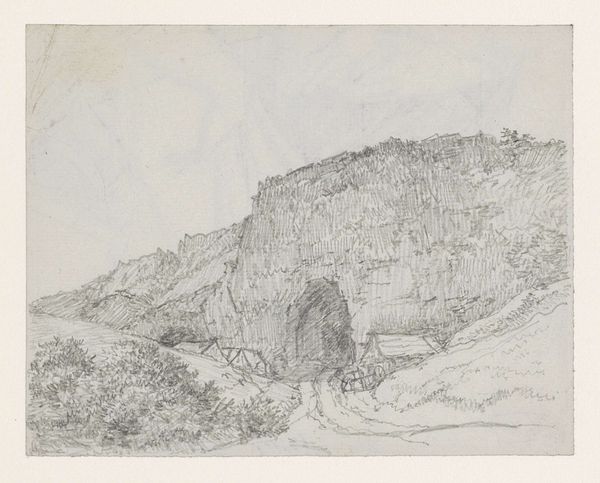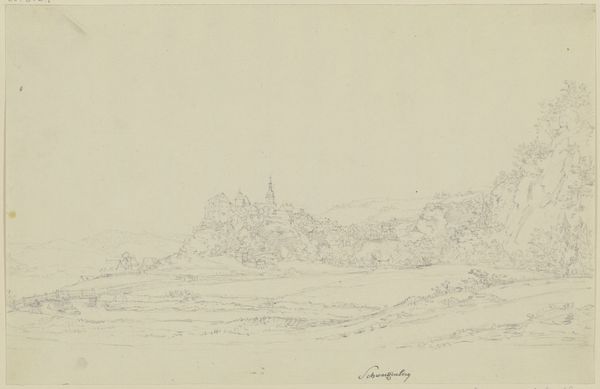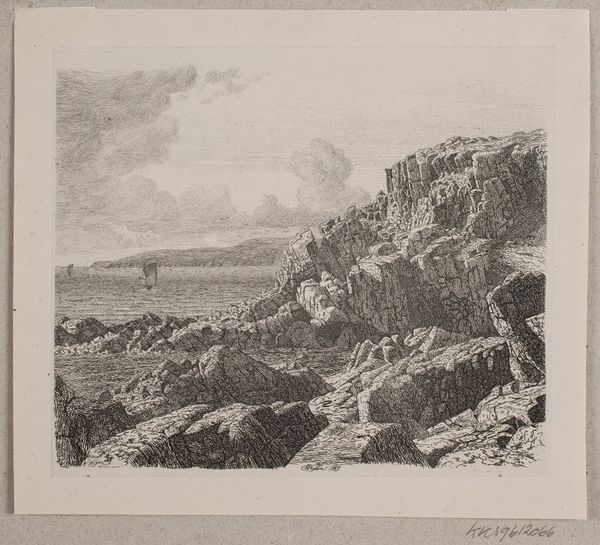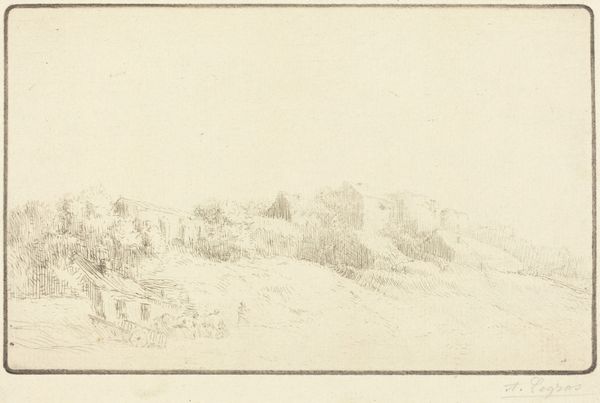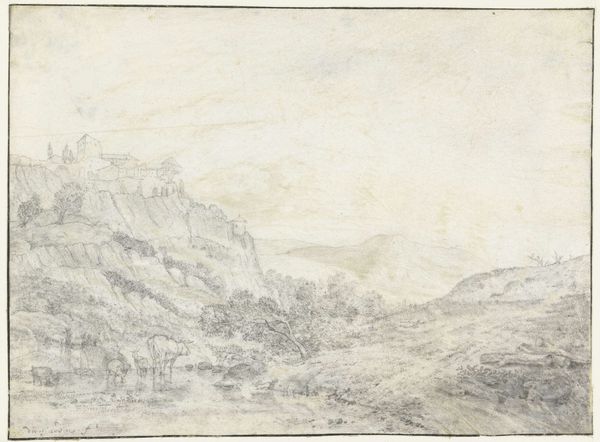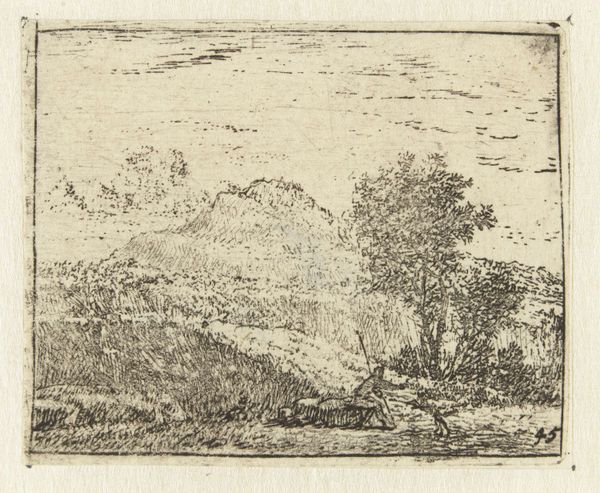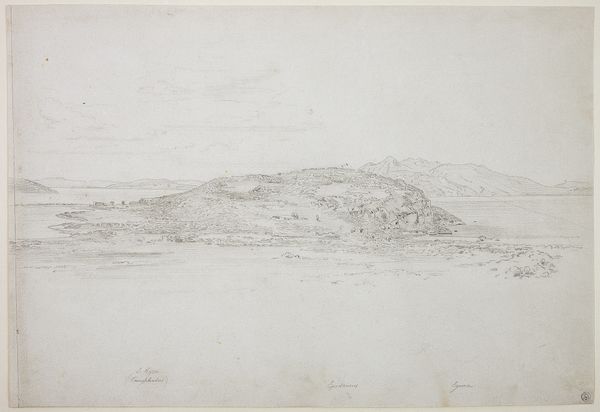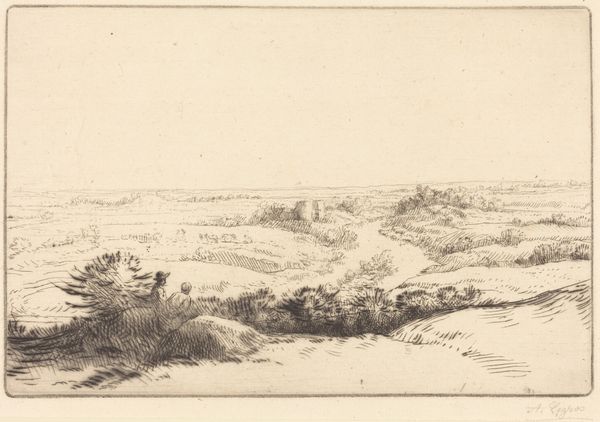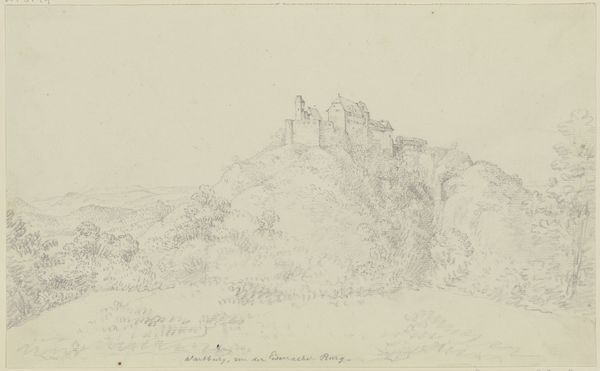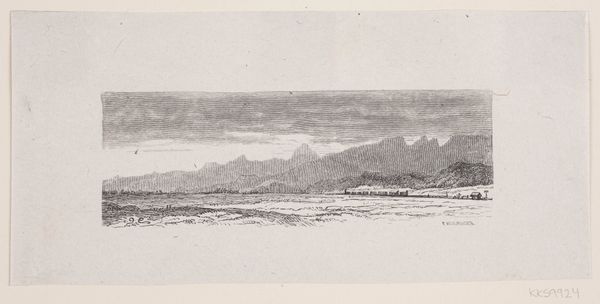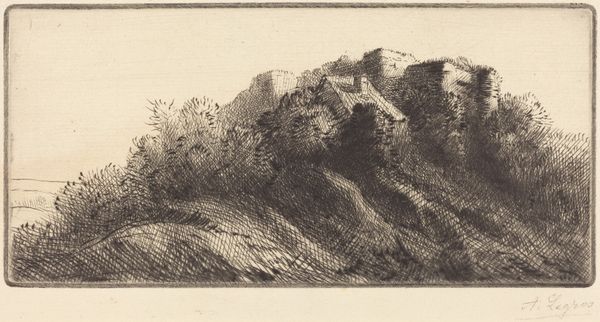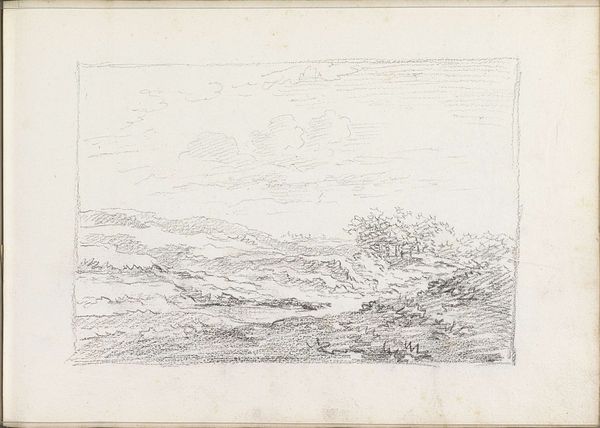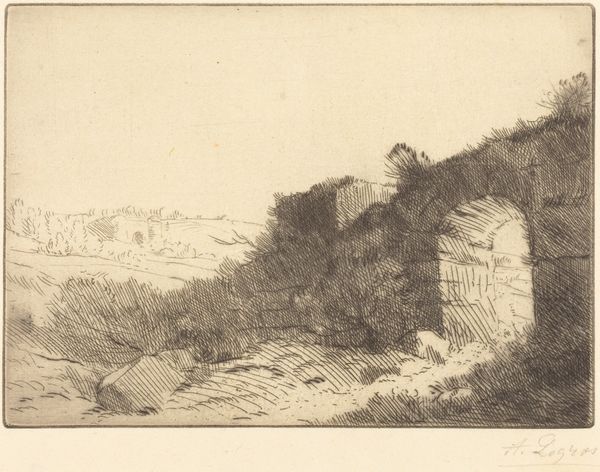
print, etching
# print
#
etching
#
landscape
#
realism
Dimensions: 70 mm (height) x 148 mm (width) (plademål)
Curator: Let's turn our attention to "Hammershus," an etching created in 1897 by Louise Ravn-Hansen. It's currently held in the collection of the SMK, the Statens Museum for Kunst. Editor: What immediately strikes me is its tranquility. There's a stillness conveyed by the monochrome palette and the detailed, almost obsessive, rendering of the landscape's textures. Curator: The artist's method certainly contributes. As an etching, lines are incised into a metal plate, which holds the ink. It's an indirect process, which might explain this distancing effect you are experiencing. How does the medium contribute to your experience of the imagery, a ruined castle overlooking a grassy hill? Editor: The labor and repetitive action to creating an etching such as this suggests it's a laborious practice, far removed from the scene it seeks to portray. I find myself pondering the experience of the artist themselves - were they onsite capturing the work, or in a studio later, rendering it? Curator: I see it as an exercise in tone and linear precision. Notice how the density of the hatched lines define form, especially the subtle modeling of the hillside and the craggy texture of the ruined walls. The artist demonstrates masterful command of form, even if they are evoking that stillness and capturing something fleeting in material terms. Editor: To add to your thought of fleeting feelings, there is a distinct interplay between the castle remnants and nature—suggesting perhaps themes of time, ruin, or human impact. How are the natural environment and human constructs mutually changing in relation to time, process, labor? It makes me wonder how much control is granted to the maker as to how the media will come across versus how much the materials act out themselves during its creation and destruction. Curator: An interesting idea to consider; it would be hard to know with any certainty! Overall, Ravn-Hansen masterfully encapsulates the intersection of the landscape, history, and human observation through the controlled chaos of this traditional printmaking technique. Editor: Ultimately, "Hammershus" resonates because it bridges past labor, materials and themes of inevitable impermanence with incredible attention to detail.
Comments
No comments
Be the first to comment and join the conversation on the ultimate creative platform.
